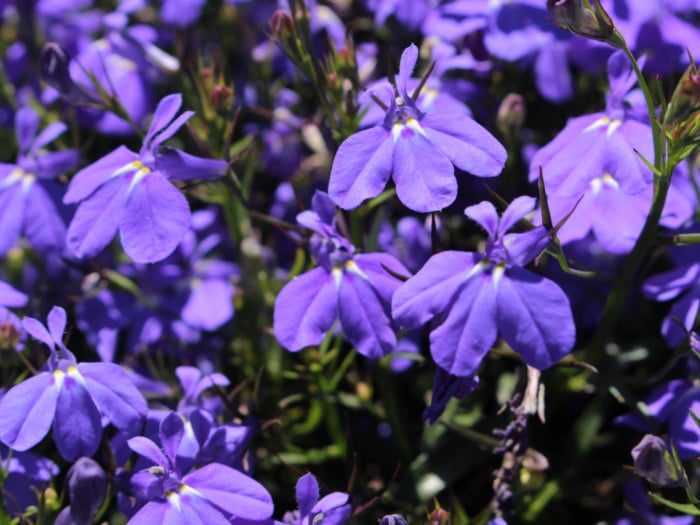People use lobelia for a wide range of natural medicinal treatments, thanks to its unique nutrient profile and versatility.
What is Lobelia?
Lobelia is actually an entire genus of flowering plants that are primarily found in tropical and temperate areas of the world. There are more than 400 species in this genus, all of which go by the common name of lobelias. One of the most popular varieties for its medicinal properties is Lobelia inflata, commonly called Indian tobacco. The aboveground parts of the plant can be used for many different treatments. [1]
Lobelia is not an addictive herb, but it does have certain chemicals that have similar effects as nicotine. Rather than being addictive, however, this chemical can help people overcome their addiction to nicotine, so this herb is known as a good aid for quitting smoking. The components of lobelia, including alkaloids, calcium, vitamin C, potassium, and magnesium, as well as unique antioxidants lobeline and lobelanine, are the cause of this herb’s many benefits.
Benefits
The many benefits of this herb include stimulating the respiratory system, improving immune health, and aiding smoking cessation, among others.

Lobelia is a plant used in herbal and homeopathic medicine. Photo Credit: Shutterstock
Respiratory System
Known as a powerful anti-spasmodic, lobelia is particularly effective for treating problems in the respiratory system. If you suffer from regular asthma attacks, drinking a tea made from this herb can soothe that inflammation and suppress the desire to cough, as well as problems with breathing. [2]
Expectorant
Not only can it help to suppress inflammation in the respiratory tracts, but it can also help to expel mucus and phlegm from the sinuses and respiratory tracts, which is where pathogens and other foreign particles can become lodged. [3]
Ringworm
This herb is often used for its topical benefits, and when made into a salve or poultice, it can be applied to the site of a ringworm infection. Applying regularly for a week or so can clear up the infection very effectively. [4]
Muscle Relaxant
There are certain muscle-relaxing qualities of this herb, so when topically applied or internally consumed, lobelia can help ease muscle strain and tension, which can aid those who have sleep problems. [5]
Smoking Cessation
There is a key chemical in lobelia, known as lobeline, that has a similar effect on the body to nicotine. It can occupy the same chemical receptors in the brain and body but is not known as an addictive substance. As a result, moderate and careful use of this herb is commonly prescribed for people who want to quit smoking.
Other Benefits
Due to the incredible diaphoretic and anti-bacterial properties of this herb, it also helps treat insect bites and bronchitis. Lobelia is also beneficial for lung cleansing.
Uses
Multiple plant parts of lobelia can be used, including the bark, leaves, flowers, and stems. These can come in the following forms:
- Tea
- Essential oil
- Tincture
- Poultice
- Extract
Although research is limited on the effects of this herb, when lobelia is recommended for smoking cessation, the dosage is about 5 mg two times per day. However, this is quite close to the toxic dose, so caution should always be taken when using this herb, and consultation with a doctor or trained herbalist is highly recommended. [6]
Side Effects
While this herb can be very helpful for health, there are also some well-documented side effects, including gastrointestinal problems, profuse sweating, and complications with among others. Pregnant and breastfeeding women should avoid the use of this powerful herbal substance. Some of the other common side effects include: [7]
- Vomiting
- Dizziness
- Diarrhea
- Coma
- Coughing
- Respiratory distress
- Inflammation
